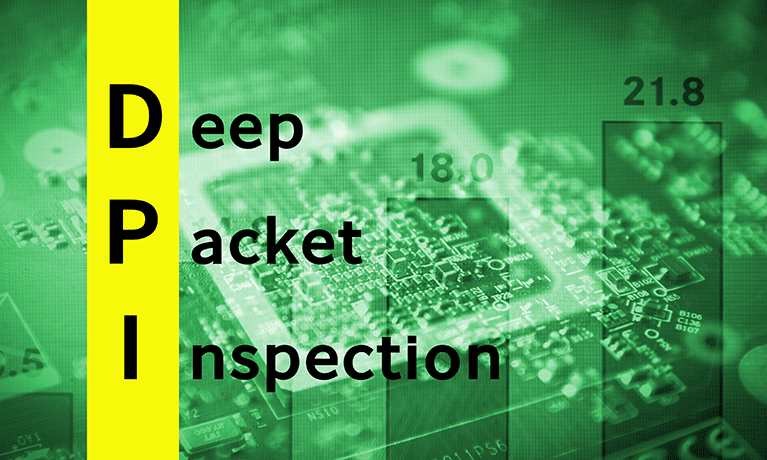By Professor Sally Dibb, the Centre for Business in Society
Trading our privacy to protect security
Have you ever thought about how digital surveillance technologies are used to protect national and international security? Technologies such as smart CCTV (sCCTV), smartphone location tracking (SLT) and Deep Packet Inspection (DPI) are used extensively by security services around the world to tackle crime and terror. Although this kind of surveillance is intrusive, the public is expected to trade some of their personal privacy in exchange for better security. Perhaps not surprisingly, after terrorism attacks or following national infrastructure breaches, the UK public tends to be in favour of strong security measures. However, the use of these digital surveillance technologies has also attracted considerable controversy.
When facial recognition technology was used in CCTV at a King’s Cross development in London, there was a row about the legality of the move and questions were raised about its oversight. This technology is able to scan people’s faces in crowded places and then make comparisons with those on police/security service watchlists. Although the site developer argued the purpose was to protect public safety, concerns arose when the local police offered to supply images to support the initiative. In light of these objections, the developers made the decision to switch off the system. But these kinds of concerns have not gone away.
Recently, concerns have emerged about the removal of safeguards that oversee the use of surveillance cameras, which would result if – as is expected – the UK Data Protection and Digital Information Bill becomes law. Likely changes would include getting rid of the Biometrics and Surveillance Camera Commissioner and removing the need for a UK surveillance camera code of practice. Experts have objected and worry that a gap in proper oversight could result.
What does the public think?
But how does the public weigh up the pros and cons of these and other digital surveillance technologies? Researchers from the Centre for Research into Informational, Surveillance and Privacy (CRISP) have examined how European citizens feel about these technologies, and the trade-offs they make between their personal privacy and security when deciding whether they are acceptable. The surveillance, privacy and security project – known as ‘SurPRISE’– involved researchers from across Europe and was funded by the EU. The project examined how smart CCTV (sCCTV), smartphone location tracking (SLT) and Deep Packet Inspective (DPI) – which is the monitoring of Internet traffic – are used by the security services.
| Digital Surveillance Technologies | |
 | Smart CCTV (sCCTV) Monitors suspicious behaviour in public areas, such as city centres, sport/music venues, and transport hubs. Can include facial recognition technology. Applications include: ANPR to target traffic offences, identifying criminals and targeting anti-social behaviour. |
 | Smartphone location tracking (SLT) Locates and tracks criminals and suspects through their phone use. Applications include: identifying, preventing and investigating security threats, providing evidence for criminal investigations. |
………………………………………………….. | Deep packet inspection (DPI) Monitors Internet communications and their content. Applications include: spotting offences such as terrorism, child pornography and hate speech, identifying suspects and supporting criminal investigations. |
The project ran a series of citizen summits in nine European countries. These events brought people together to explore how digital surveillance technologies are used and to share their views.
Using citizen summits to understand the public’s views
Citizen summits are a type of participatory research that can be used to get the public involved in social, scientific or political issues which impact their lives. They were first used in the United States to engage the public in local decision making. In 1999, the mayor of Washington DC held a seven-hour citizen summit to gather the views of 3,000 local people about district planning. Seated in table groups, participants reviewed the city’s strategic plan and used electronic polling keypads to answer questions about the priorities within it. The polling results were shown on a large central screen – a bit like in the voting part of the Eurovision Song Contest – so everyone could see the results. Each table group also shared feedback directly with the mayor and could ask him questions.
20 years on, citizen summits have helped gather views about a wide variety of political and social issues, ranging from climate change and local development decisions, to how people’s health data should be used. These summits are known to be effective in engaging regular people with issues that affect them, particularly those that are complex, such as in relation to technology or innovation.
As part of the SurPRISE digital securities project, 12 citizen summits took place in nine European countries: Denmark, Norway, the UK, Austria, Germany, Switzerland, Hungary, Italy and Spain. The aim was to understand how people viewed these technologies, how they weighed up the privacy and security pros and cons, and whether they thought their use was acceptable. Across Europe, 1,800 people took part. Those recruited were profiled to reflect the socioeconomic and demographic mix in each participating country. Each country looked at two out of three digital surveillance technologies: Smart CCTV, Smartphone Location Tracking, and Deep Packet Inspection (DPI).
In the UK, 200 people attended two citizen summits in Birmingham which examined the use of Smart CCTV and DPI. In advance, participants received an information magazine that provided a non-technical and balanced view of the pros and cons of the technologies. During the summits, they were shown short documentary style films that provided more details about these technologies and their use. Seated in table groups, they then discussed the issues and were questioned about their views. Each group also made recommendations for policy makers based on what they had talked about.
What did the citizen summits discover?
- The public is very engaged with security and privacy issues
UK participants were hugely engaged with the issues that were discussed at the summits. They listened intently to the information they were given and talked extensively with others about the pros and cons of using digital surveillance technologies. A wide variety of views was apparent.
- The more people found out, the more concerned they became…
At the start of the summit, eight out of ten participants said that they felt safe in their daily lives, with just over half stating they thought Britain was a safe place to live. Nine in ten were supportive of using digital technologies to protect national security. However, nearly half said their views about these technologies had changed during the event. Three out of ten participants were more negative about the use of digital surveillance technologies at the end of the summit than at the start.
Learning more about how digital surveillance technologies could affect their personal privacy and then having the chance to debate these concerns with others, seemed to have changed some people’s views. At the end, over two thirds of participants said they were concerned about their personal privacy, compared with around one third at the start.
- The findings show that the perceived benevolence of security agencies is essential to acceptability in all three cases. For DSTs with greater privacy risk, questions of competence and integrity enter citizens’ assessments.
Contrary to what is often assumed, the results of the summits suggest that the public is not necessarily willing to sacrifice their privacy in the interests of national security. The extent to which participants ‘trusted’ the security services and the commercial suppliers that provide some of the technologies used, was widely discussed. Many were suspicious about the competence of these parties and expressed concerns that they might abuse their power. These worries were greater for the technologies that were perceived to be the most intrusive. Overall, there were high expectations that the digital surveillance technologies would be used carefully and always with the best interests of communities in mind.
These views were reflected in the recommendations that summit participants made to policy makers, which included calls for greater transparency in why data is gathered and how it is used, stronger regulatory oversight and better public accountability. The public, it seems, is not necessarily prepared to sacrifice privacy for security, without strong safeguards in place.
Read more about these issues
Esposti, S. Ball, K. and Dibb, S. (2021). “What’s in it for us? Benevolence, national security and digital surveillance”. Public Administration Review, 81(5), 862-873.
Ball, K., Degli Esposti, S., Dibb, S., Pavone, V. and Santiago-Gomez, E. (2019). “Institutional trustworthiness and national security governance: Evidence from six European countries”, Governance, 32(1), 103-121.
Degli Esposti, S., Pavone, V., Ball, K., Dibb, S. and Santiago Gomez, E., (2017), “Beyond the Security Paradox: Ten Criteria for a Socially Responsible Security Policy”, Public Understanding of Science, 27(6), 638-654.
Acknowledgement
The “Surveillance, Privacy and Security project (SurPRISE): A large scale participatory assessment of criteria and factors determining acceptability and acceptance of security technologies in Europe”, received funding from the EU FP7 programme, under grant number 285492.
Through understanding the impact of organisations’ activities, behaviours and policies, the Centre for Business in Society at Coventry University seeks to promote responsibility, to change behaviours, and to achieve better outcomes for economies, societies and the individual.




Comments are disabled